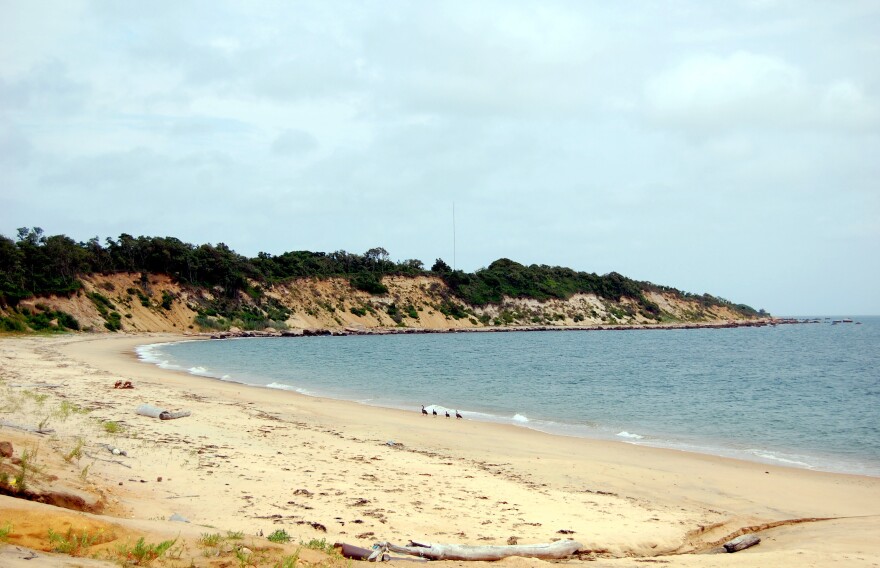Plum Island lies just off the tip of Long Island, not far from the Hamptons. It sports miles of unblemished shoreline, hundreds of acres of undeveloped forest, a lighthouse — and the federal government is planning to put all of it on the auction block.
But before you go putting your bid down, you should probably know: Many of the current residents have foot-and-mouth disease. And their neighbors on the mainland like it that way.
Now, foot-and-mouth disease is harmless to humans — but it's highly contagious among hoofed animals. It packs the potential to decimate the $60 billion cattle industry in the U.S., which is a big reason why Congress, fearing the threat of an outbreak, confined the disease to Plum Island in 1955. For over half a century, the island was the only legal location to conduct research on it.
In 2008, though, Congress authorized the Department of Homeland Security to find a "suitable" alternative site. So, the research program will be moving to the National Bio and Agro-Defense Facility in Manhattan, Kans. Jason Golden, the island's official tour guide, says developments in lab safety means better research can safely be done on the American mainland.
The date of the island's auction will be set once officials know better when the Department of Homeland Security will be done building the new site.
Still, if you're in the market for a high-security bio-lab — and an island to go along with it — now's your time to start mulling a bid.
Golden says there's so much more to the island: a 19th-century lighthouse atop a grassy hill, an old Army base, a power plant, even fresh water. Perhaps Plum Island's biggest selling point, though, is its expanse of wetlands and forests the size of Central Park — which is so close to Central Park you could take a helicopter to get between the two spots.
"We've conducted many of these competitive sales, but there's no comparison to it," says Patrick Sclafani, a spokesman for the General Services Administration, the agency auctioning off the property.
Usually, the GSA just auctions surplus Army trailers and rusty barges. For Plum Island, however, Sclafani says the group is planning focus groups to figure out who might want to own a series of sandy beaches and a biolab. Their best guess right now is either a preservationist, a research company or a developer.
Whoever the buyer may be, the price could be steep. Jonathan Miller, a real estate appraiser and researcher who specializes in luxury properties, says the key here is location, location, location. Plum Island is next-door to the Hamptons, one of the wealthiest communities in the country.
"The most expensive real estate transaction was in the Hamptons," Miller points out, "and it was $147 million."
Acre by acre, Miller says Plum Island could be worth as much as a billion dollars. And while zoning and litigation could affect that value, its history of contagious animal disease isn't likely to scare anyone off.
"So there's many examples of quote unquote 'stigmatized properties' that — who would think anyone would live in these?" Miller says. "And then you gut it, strip it, remediate, create a high-end real estate product that breaks records in the neighborhood."
Among locals, the matter of who will buy the island is still a matter of fierce debate. The nearby town of Southold, on Long Island, turned Plum Island into a "research district" in 2013, meaning that one can only build there so long as the project contributes to "research or education."
Environmentalists, for their part, are threatening to block any transaction that doesn't include protections for endangered species. Meanwhile, developers are pushing the idea of a Google Island or Apple Island.
Copyright 2021 NPR. To see more, visit https://www.npr.org.



